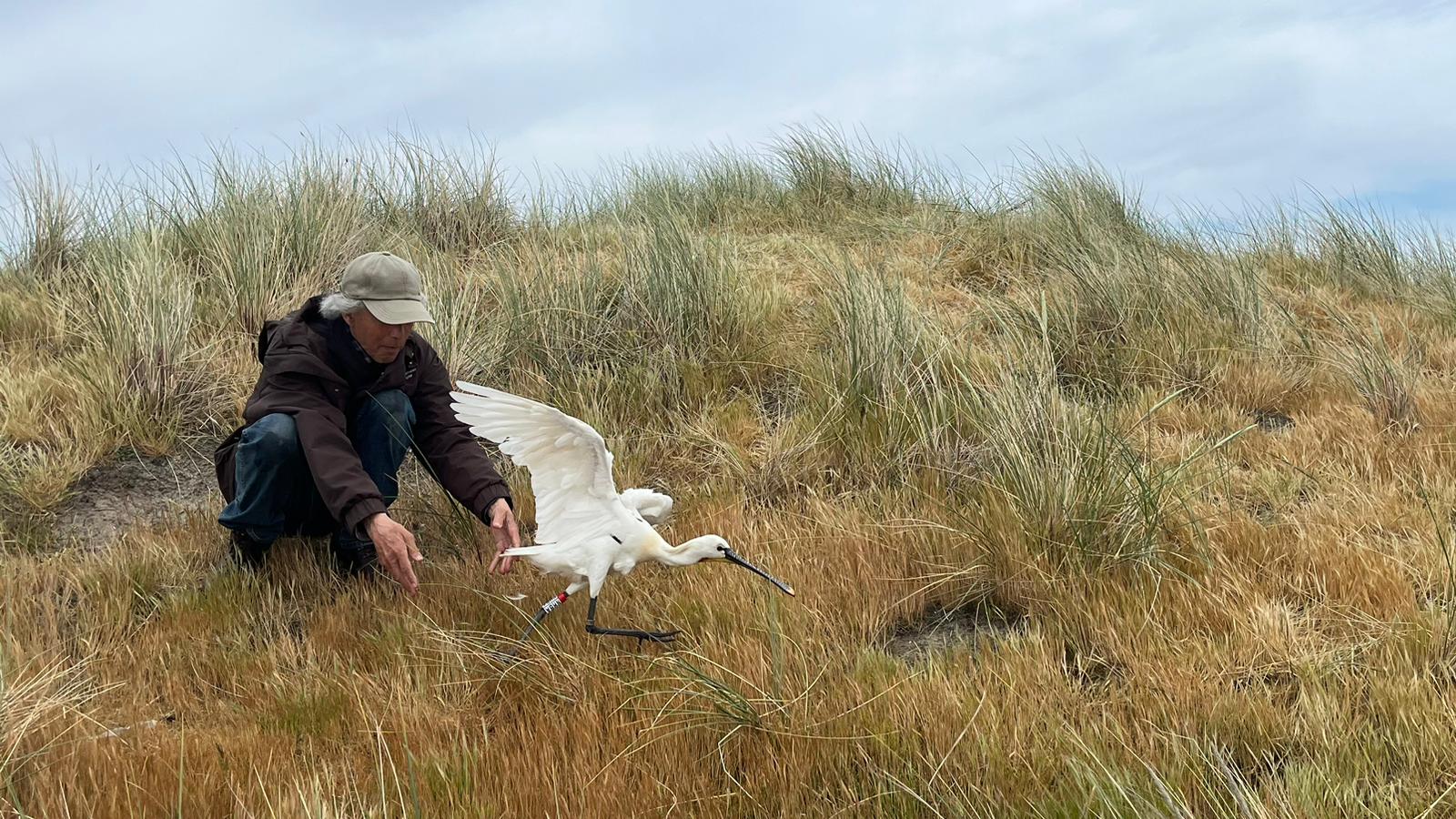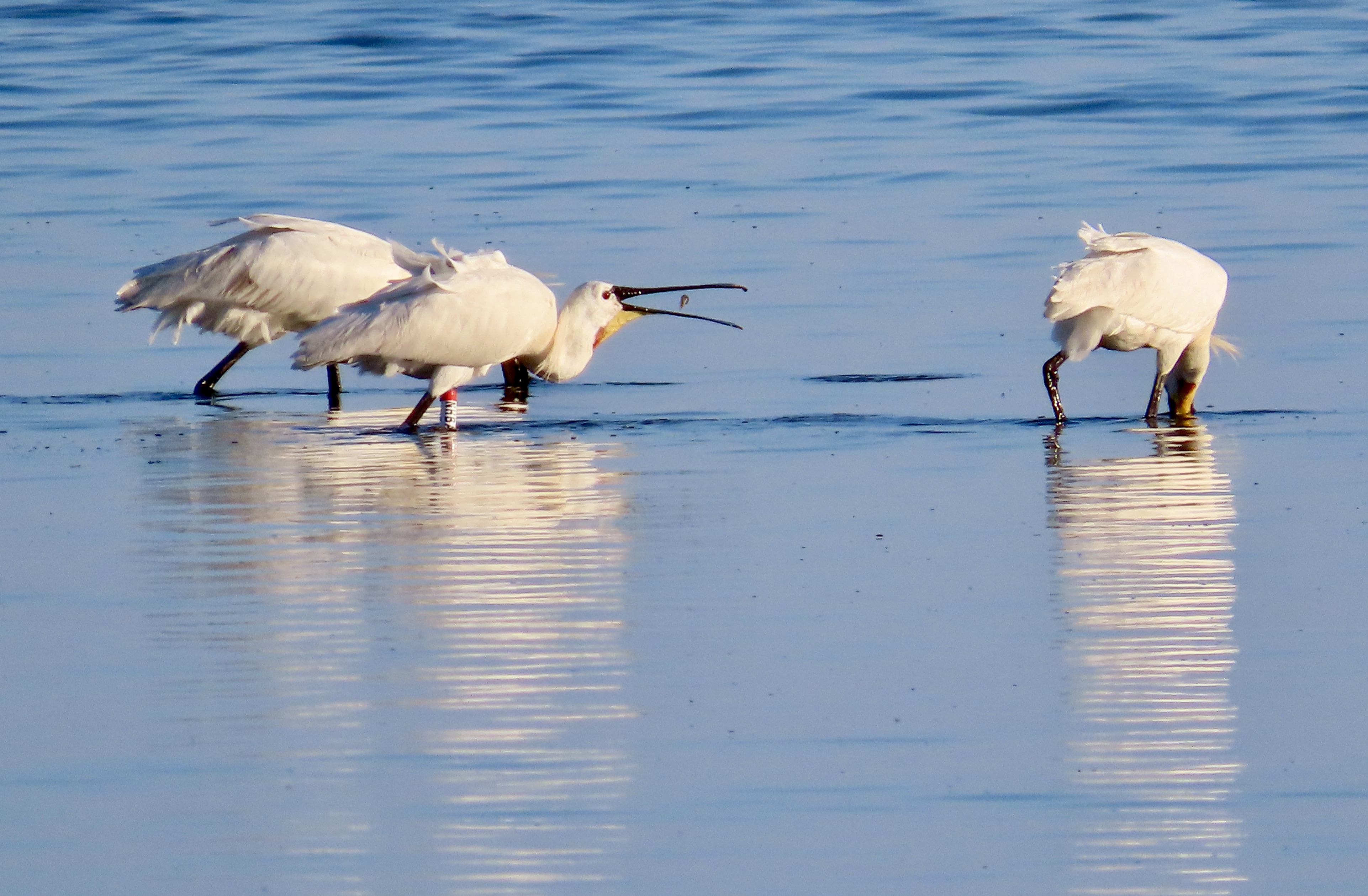Every year, around 240 spoonbills breed on Vlieland, spread across several colonies. This spring was exciting for the spoonbills. When the first spoonbills arrived, it was so incredibly wet that part of the former breeding colonies were still under water. In addition, the first spoonbills to nest in the dry dunes were surprised by a stray dog during the egg phase. This cost a large number of spoonbills their nests and they left the colony. Fortunately, the spoonbills arriving later from their wintering grounds did not know that a dog had been there and went on breeding as usual. In the end, it turned out to be a good breeding season, thanks to dispersal across different areas on the island. Spoonbills nested from east to west, in the dunes, in the Kroonspolders and on the Vliehors.
Many people by now know Sinagote, the spoonbill we have come to know so much about because she had a transmitter on her back. She was last seen along the Post Road in July 2022, along with her two already flying chicks. But now we know for sure that she has died after 18 years, a long life for a spoonbill. Indeed, she has not been seen on Vlieland for two years, nor in her wintering grounds in Brittany.
This breeding season, we managed to give six spoonbills on Vlieland a new transmitter. These spoonbills can be followed live on the website Globalflywaynetwork.org and via the app Animal Tracker. The first spoonbill is Jessy, a female breeding in the dunes. We don’t know what her past is because when we caught her, she had no rings on. She is was very easy to see from the Postweg, where she is feeding with up to a hundred other spoonbills with rising and falling tide. It is now very exciting where she will spend the winter. Meanwhile, she is in southern France. Perhaps she will move on.

In the Kroonspolder, a male, Tygo, has been tagged. He already had colour rings on his legs, which is how we know he hatched in 2014 on the Banaan near Den Oever. He has been seen on Vlieland every year since 2018 by Michiel Muller and Carl Zuhorn. In the 10 years he has been flying around with his colour-rings, he has only been seen twice in a wintering area, once near Seville and once near Huelva in south-west Spain. Meanwhile, Tygo is in a nature reserve south of Seville so this seems to be his regular wintering site.

Tygo - Photo: Michiel Muller
As in other years, with the team from Staatsbosbeheer Vlieland and volunteers, we colour-ringed all chicks from one colony on 4 July. Despite the bad weather the weeks before, 35 chicks had still grown up. They all now have a white ring on, with letters and numbers, a so-called inscription ring; each bird has his or her own code, starting with ND. Four of the spoonbill chicks were already big enough to put on a transmitter. They have been given the names Vlieland, Malgum, Distel and Zwaluw.

We know that over 60% of young spoonbills do not survive the first year, as it is very difficult to learn everything you need to know to grow up: flying, foraging, dealing with tides, interacting with other spoonbills and finding the migration route. And then there are many dangers along the way such as power lines, wind turbines, birds of prey and hunters.
Of these 4 transmitter young birds from Vlieland, only Distel is still alive at the time of writing. Transmitter bird Zwaluw stranded in France and was wrs caught by an Eagle Owl, Transmitter bird Malgum stranded in Spain probably due to starvation, and Transmitter bird Vlieland was recovered in a mountain area in Spain.
When a transmitter bird no longer gives a ‘signal’, we within our working group try to engage our network as soon as possible to secure the remains of the spoonbill, and the transmitter. This works miraculously well, even abroad the transmitters are recovered within a few days to a week.
As part of the Watching Birds project of the research group BirdEyes in Leeuwarden, we can continue spoonbill research on the mud flats for the next four years. We cannot wait to see what the ringed and tagged spoonbills from Vlieland will tell us in the coming years.
https://www.birdeyes.org/ en https://werkgroeplepelaar.org/


